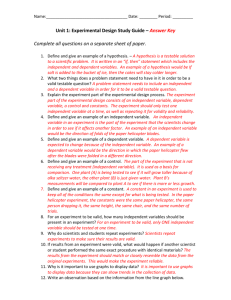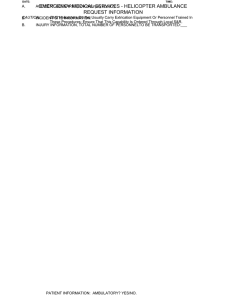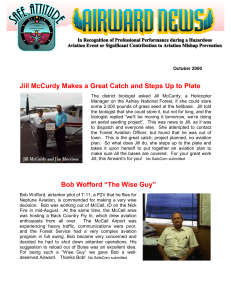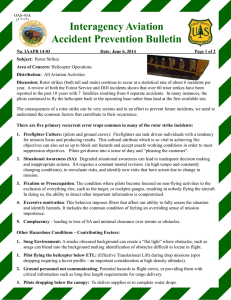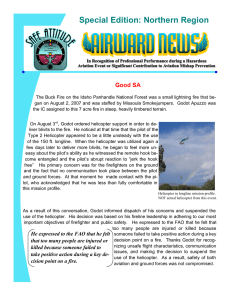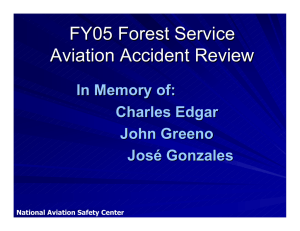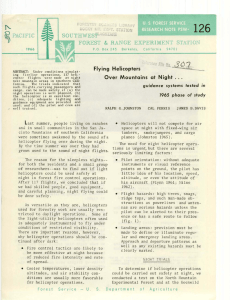L e s s o n s L... Southwestern Region Aviation Safety Helicopter R otor Strikes Summary of Incident
advertisement
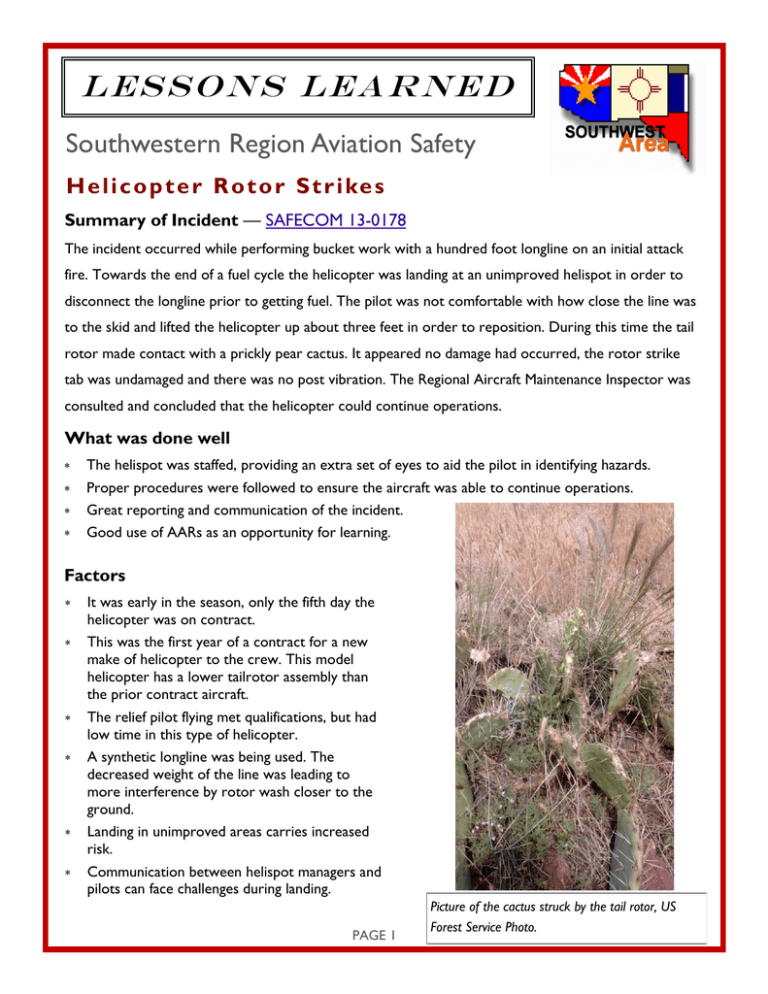
Lessons Learned Southwestern Region Aviation Safety H e l i c o p t e r R o t o r S t r i ke s Summary of Incident — SAFECOM 13-0178 The incident occurred while performing bucket work with a hundred foot longline on an initial attack fire. Towards the end of a fuel cycle the helicopter was landing at an unimproved helispot in order to disconnect the longline prior to getting fuel. The pilot was not comfortable with how close the line was to the skid and lifted the helicopter up about three feet in order to reposition. During this time the tail rotor made contact with a prickly pear cactus. It appeared no damage had occurred, the rotor strike tab was undamaged and there was no post vibration. The Regional Aircraft Maintenance Inspector was consulted and concluded that the helicopter could continue operations. What was done well The helispot was staffed, providing an extra set of eyes to aid the pilot in identifying hazards. Proper procedures were followed to ensure the aircraft was able to continue operations. Great reporting and communication of the incident. Good use of AARs as an opportunity for learning. Factors It was early in the season, only the fifth day the helicopter was on contract. This was the first year of a contract for a new make of helicopter to the crew. This model helicopter has a lower tailrotor assembly than the prior contract aircraft. The relief pilot flying met qualifications, but had low time in this type of helicopter. A synthetic longline was being used. The decreased weight of the line was leading to more interference by rotor wash closer to the ground. Landing in unimproved areas carries increased risk. Communication between helispot managers and pilots can face challenges during landing. PAGE 1 Picture of the cactus struck by the tail rotor, US Forest Service Photo. Lessons Learned Southwestern Region Aviation Safety H e l i c o p t e r R o t o r S t r i ke s Recommendations and Take-Aways Consider clearing more than the established minimums when making helispot improvements. Establish communication protocols prior to flight operations. Maintain positive communication between pilot and marshaller or helispot manager. Understand the different physical configurations of helicopters. Brief on the dynamics of synthetic longlines and communicate spatial position and clearances to the pilot. This is a good example of multiple influences leading to an incident. Looking back we can apply the Swiss Cheese Model for this event. Early season is a time when pilots are getting back into the grove and establishing a working relationship with the crew. Had it been later in the season or had this not been the first year of a new contract, the crew, and the pilot, would have had more familiarity with helicopter characteristics and an increased awareness of crew resource management. This could have lead to a different realization of hazards. Image of the Swiss Cheese Model, adapted from James Reason, 1990. For more information on the Swiss Cheese Model and Human Factor please visit http:// www.nifc.gov/fireInfo/ fireInfo_documents/ humanfactors_classAnly.pdf For any questions, comments, or concerns please call Jami Anzalone, Regional Aviation Safety Manager at (505) 842-3351 or Clem Pope, Aviation Management Specialist (detailed) at (505) 842-3354




